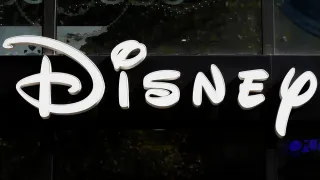
Aug 21
Sasha Colby’s new tour kicks off at Seattle’s Moore Theatre on Sept. 16
Arul Gnanasivam READ TIME: 1 MIN.
If you missed it last year, then you’re in luck: Sasha Colby — best known as the second-ever Transgender woman to win RuPaul’s Drag Race and the first Native Hawaiian — is returning to Seattle on September 16 at the Moore Theatre for the first stop on her highly anticipated Sasha Colby: Stripped II world tour. This time it has expanded to 30 cities across North America, ending in Hawaii, where she grew up.
“I actually love Seattle. My partner lives there, so I’m always there,” Colby told the SGN. “There’s so much space for different kinds of drag, but it’s great, because it feels like a second home. I get to have a lot of friends out in the audience.”
“To come home [to Hawaii], it was really full circle,” Colby added. “It’s nice to do a show about all the things I’ve learned and loved for the people that lived it with me.”
Colby’s upbringing in the 50th state influences each performance, which are stories of her life, of getting into drag, growing up in Hawaii, and what makes her Sasha Colby.
While last year’s tour was more grounded, this year’s is moving in a much broader direction. “We’re doing a lot more of going different worlds for each number this time around,” Colby said. “A lot of fantasy, a lot of magic — I think we need a little bit of that right now.”

Alongside fantasy, Colby is exploring the entire spectrum of femininity.
“I’ve been highlighting different feminine archetypes, like high glam, high femme,” she said. “The siren or femme fatale or the goddess — all these characters you can embody in each number.”
Colby isn’t just keeping the spotlight to herself — she’s having a drag contest in which up-and-coming drag artists can apply for a chance to be featured in her show.
“I was given a lot of opportunities when I was younger, from people I looked up to,” Colby explained.
The year’s contest is slightly different from last tour’s, open to legends and newcomers alike. The event is a great way to showcase drag talent from each state, and Colby has already received almost 700 submissions from each city.
“It’s nice that I get to showcase even those legends who may not be on a television show but are still incredible,” Colby said. “Plus I get to watch drag in my own drag show.”
Despite being in tour mode, Colby is still looking forward to continuing her other gigs, including the launch of her own ponytail collection, a collaboration with Salon Xtensions. “I thought it would be perfect to give all my knowledge from trial and error of sewing my own ponytails throughout the years and making it affordable and easy to use,” she said.
Along with her hairline, Colby will be making stops in Chicago, Chile, and even São Paolo.
Support the Seattle Gay News: Celebrate 51 Years with Us!
As the third-oldest LGBTQIA+ newspaper in the United States, the Seattle Gay News (SGN) has been a vital independent source of news and entertainment for Seattle and the Pacific Northwest since 1974.
As we celebrate our 51st year, we need your support to continue our mission.
A monthly contribution will ensure that SGN remains a beacon of truth and a virtual gathering place for community dialogue.
Help us keep printing and providing a platform for LGBTQIA+ voices.
How you can donate!
Using this link: givebutter.com/6lZnDB
Text “SGN” to 53-555
Or Scan the QR code below!







